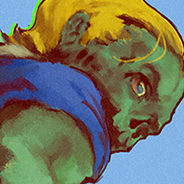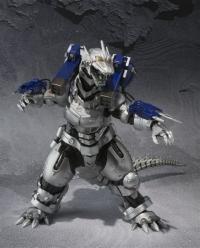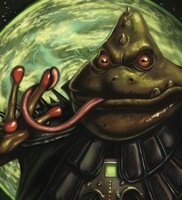So, this is a beast.
Middara is a huge, sprawling Kickstarter with lots of stretch goals which produced a huge, sprawling coop dungeon crawl with rather a few miniatures, approximately two billion cards, and a soul-crushing 75 page rulebook. That could describe half of the boardgames on Kickstarter from the last two years. We will be seeing many more giant boxes, led by the indomitable juggernaut known as Gloomhaven. None of them will be as good as Gloomhaven.
But Middara comes pretty darned close. And does some things rather better.
Times played: 15+ (Two crawl mode games, and the first 2 of 5 chapters)
What You Get In The Box:
That is a little hard to say at the moment, given that there is no normal retail box, and that the second Kickstarter will differ from the first. The $100 box from the first Kickstarter which I bought comes with 50-60 minis, ~500 cards in various sizes, 30-40 dungeon tiles, 15-20 custom dice, a huge 75 page rulebook, 3 other small adventure supplement books, and the absolutely terrifying 450 page campaign book. There isn't a massive amount of stretch goal fluff, with the bulk being 6-8 optional adventurers (mini + 1 card), as well as some replacement minis for some of the base game's standees.
Oops, forgot about the standees. There are 20 or so large standees that represent creatures/bosses which only appear once or twice in the campaign. I also forgot about the translucent red revealer and the two giant counter sheets with terrain tiles, status tiles, and the usual wound counters. The box is somewhat larger than Gloomhaven.
Minis:
These are gray PVC with snap-on color rings to allow you to tell identical creatures apart for hit point tracking. At first look, they are slightly underwhelming. The detail in the figures is very faint and understated which makes them look somewhat featureless. The poses and sculpts are very anime-inspired and dynamic. Once painted, they look quite stunning. A basic paint job brings out the detail and shows off the fairly impressive art design of the game. Each monster/adventurer consists of mini(s), a 5x7 stat card, and an initiative card. The artwork matches the figure quite closely, and the figures are distinctive enough in form so that figures will not get confused. The 6 large critters are STUNNING and everything has a capricious mix of cartoon whimsy and fleshy body horror that is modern anime. Characters are dressed in a jumble of modern and fantasy clothing representing Middara's theme of a anime/fantasy world which is parallel to our modern earth.
Cards:
Most of the cards in the game are items. Seriously. There are unfathomable numbers and tiers of items. 450 or so. Oh, all right, I can enumerate the tiers: Mundane, Common, Uncommon, Rare, as well as Unique items for each of the 4 tiers. There are also special Monster Loot items which are only attainable through special circumstances. Each tier has (inhale): Weapons, Two-handed weapons, Cores, Armor, Relics, Accessories, Consumables, and Enhancements.
There are also 5 different classes of skill cards. For these, I'll use paraphrased names: Fighter, Cleric, Wizard, Thief, Summoner. And there are 4 levels of these decks. There are a couple of smaller decks, and there are also (dum, dum, DUM) HIDDEN DECKS. These have super-secret, items, skills, and monsters which are revealed slowly in the campaign.
Tiles and Counters:
The terrain for all of your fighting are a large set of double-sided 6x6 square tiles with 7 or 8 different themes. And the tiles are just beautiful. Bright vivid colors and an illustrated look with liberal use of gloss spot varnish for water and glowy things. The tiles are double-sided, and occasionally get a small tweak or two from adding a terrain counter on top. There are lots of very perilous bridges, pits, waterfalls, as well as crumbling statues, crystals and ancient statues. And most of the tile features are wound into the various scenarios. That said, there are really only 6 types of terrain, and they are introduced slowly.
Counters are pretty basic. The only standouts are the status and effect counters which are quite ugly and mostly just consist of a text description of what the effect does. Which is awesome, and I wish more designers would get that clue. I would so much rather have the reminder of the actual rules than having to look at a giant summary sheet. Oh...there is art on the back of those counters. I had never really noticed it before, because I am always looking at the useful side.
Extra bits:
Anyone who knows me will know that when I really like a game, it gets a ton of attention from me adding extra bits. For Middara, that came down to painting the minis, cutting a wooden storage solution, and adding totems and objective markers.
Storage is a definite requirement here. There are enough cards and tokens that you need to corral and access them quickly during play.
Normally, I would have dragged out some 3D terrain and really enhanced the look of the board. For Middara, that would have been wasted. The tile art is just too good. The exceptions are totems and objective markers. The totems DEFINITELY need to stand out a bit because they activate when someone gets within line of sight (more on that below). Objectives are just a bit more important that other things, so I printed some tokens for those.
What You Do:
Middara has two modes of play. One is a crawl mode, where you run through 3 or so encounters killing things and doing the whole dungeon thing. The set comes with 5 of these. The main draw is the campaign which is an 80-90+ hour 450-page epic. The campaign branches as well as having side quests, something called Bounties, which are pluggable side-quests, an awful lot of encounters, and a scary amount of descriptive text. (More on that in a bit.)
The campaign is kind of the usual game loop. Do the encounter, get experience and gold, buy stuff and gain skills. Fight harder stuff. Get better stuff. Nothing unusual there. Where things start to differ is how the encounters work...
First of all, the default goal for an encounter is to get one Adventurer to the Exit. That's it. Bypass the monsters all you like (and not get as much gold). You even have a character who can fly over the monsters. This doesn't always work, because they are mostly just as fast as you are. Middara's screws with the objective as much as possible. The exit might not start on the map. The objective might require you to kill a certain monster or perform some task first. Encounter maps are riddled with Totems and Objectives. Totems activate when you get within line of sight of it, and require you to read a block of text in the matching book. This is covered with red splotches requiring the use of the revealer. And that text will invariably tell you that something bad just happened. New monsters spawned, or you look around a corner and see more dungeon. Where monsters spawn. Or sometimes a shortcut in an impenetrable wall might be revealed or you find an awesome bit of treasure.
In fact, each encounter consists of a map, some special rules, and then a LOT of that red blotchy text. Hiding in that text is the very spirit of adventure.
Shopping is a Feeling:
Of course with all of that loot you gained because you didn't skip by ALL of the monsters, you get to buy stuff. Here is where things get a little odd: Middara's characters are nearly identical. Same stats, with one minor special power being the only differentiator. The big difference with Middara is that any character can wear and use any item and has access to any skill. You can even mix and match between multiple skill decks/trees. Weapon cards have various combos, and some of the skills interact with specific types of weapons.
Middara makes you play their 4 characters, but this doesn't matter because you can respec each character hundreds of different ways. I'm playing a fighter/thief/summoner. Our cleric/scout/tank is the fastest character in the party.
Even better, most of the items can be buffed with enhancements to improve their stats. This is like socketing gems in Diablo.
The Story:
The campaign is very, very long. It also contains more story text, character, and plot development. A novel's worth. Tons of story text. More story text than any rational human wants in their game. (Excepting avid fans of Metal Gear Solid's lengthy cut scenes. Both of you.) There are provided apps and mp3 files of a professional voice actress reading the giant pile 'o text, but there are still some over 30 minute slogs of pages and pages of listening to the characters yammer on. The text and plot are fairly interesting, but not compelling enough to sit still for that long. The particularly lengthy sections are usually right before shopping, which means they can be a background for the lengthy tuning procedures. Even reading through the Cliff Notes style plot summaries posted on the Middara support site can take 5-8 minutes.
The Succubus crew are aware of this, and have promised an option for shorter text and audio in the future. This is by far our biggest gripe with the game--there is just too much text in the story parts. Oddly enough, the world has some unusual and interesting lore which exists completely outside the base game in an online video. That video is quite compelling, but somehow the text in the campaign book feels more like a barrier to the fun bit where you get to kill stuff.
Killing Stuff:
For the actual dungeon-y part of the game, Middara mostly sticks to the basics. You get 3 action points each round, but can never have over 5. 1 lets you move your movement, 2 allows you to attack, 1 allows you to interact, 1 allows you to trade items and/or re-equip items. That's pretty much it--no sprawling action lists. The rest of the things you can do tend to turn up on your weapons and skill cards.
Initiative order is decided by dealing out cards for each type of combatant and then looping through the order. If you've played Divinity: Original Sin, you see the SP and initiative track that is clearly the inspiration. And of course a few abilities do screw with the Initiative track.
Resolution involves rolling 2 dice over a target's defense. Icons on the dice interact with various skill and items to boost or add extra effects. If you've played Descent, you know the drill. The one confusing aspect of the rules is that the roll and target varies between fixed (0 dice) to rolling 2 dice for both attack and target value depending on the type of attack.
The rule complexity ramps up over time. Your first encounter involves standard melee attacks, and very little gear. As you add skills and experience, the number of options starts to get rather tricky. By the time you are dealing with dodge, counterattacks (if someone misses, the opponent may counterattack), as well as opportunity attacks if someone moves away from you.
I see the high level of chaos with my dual-wielding sword character who is outfitted with a skill which gives him a free attack every turn, as well as a pile of cards which offer free dodges, re-rolls, and counter attacks. Zeke may end up making 4 or more attacks in a round. It is often a viable strategy for him to just walk by an enemy and provoke an attack. Zeke can then dodge and counter while continuing to walk past.
This may sound excessive, but the monsters are based on lengthy AI text on each monster card. They will often make multiple attacks or moves, and some of the bosses just walk through a list of actions, getting to perform nearly all of them. Thus, the average turn is longer, and each critter turn is rather more involved. There can be multiple attacks, moves, dodges, counter attacks, and opportunity attacks.
And just a bit mathy... The basic rules are similar to Descent 2nd Edition, but a character has a LOT more stuff. You hold two hands of weapons, a Core (stat bump item), and Armor. All of these may have upgrade cards applied. Then you have an Accessory, up to three Relics, and 1-8 skills. Also up to 3 consumables equipped, plus another 3 in your pack. All of these have a mix of Passive, per round, per encounter, and per "outing" abilities which can be applied.
Plus, each hit requires you to overcome a target's defense (easy to calculate), but then damage is the attack roll difference plus all of the damage modifiers from the above pile of things. Mercifully, the game ramps you up with the number of modifiers, but we still occasionally miss an ability we really should have applied or used.
The one bonus of the relative complexity is that you really cannot play another person's character from across the table. Even sitting down to try and figure out what to do with a new character with all of the cards in front of you requires adopting a new play style.
The game can also be pretty capricious. We've had characters felled by a single lucky hit. The 2d combat system starts with applying damage as difference in attack value - defense roll. Get rolls at both ends of the 2D6 bell curve, and very bad things can happen. Pits in Middara also aren't just the couple-of-points-of-damage-and-end-your-move flavor. These are more like instant-death-thank-you-for-playing pits. There are also rules for jumping, and pit placement in the scenarios often will give you a major shortcut that you have only a teensy tiny chance of falling in. But of course, monsters will also prefer to leap a pit rather than skipping an attack. Even bosses can fall in.
It is these moments that Middara eclipses Gloomhaven. Gloomhaven's brilliance is its careful manipulation of lots of critters, planning, and the ever present pacing caused by the fatigue card discard system. Middara mixes up the scenarios, often outnumbers you, hammers you with the occasional insta-knock-out (there is no death, for the most part). But your objective is usually just to run, dodge the monsters, and try to get out alive. It feels more dangerous.
The game also encourages risky behavior. Losing an encounter branches the story, but you always keep progressing (not true -- a few encounters pop up a big "Campaign Over" flag. ) Combine that with the wall of splotchy red text, and the game provides a much better sense of exploration and danger. In Gloomhaven, you can see a chest and pretty much calculate how hard it would be to grab it. In Middara, that chest could cause part of a wall to collapse, revealing a new room, or be just some extra gold. Nearly every session has led to a moment of sheer terror or relief when the tide shifts in one direction or another.
The decision tree in the campaign seems much more elaborate than Gloomhaven. There are definitely some cases where you choose life or death form an enemy. There can be multiple win and lose conditions which may remove characters from the game or set flags which lead to very different versions of particular encounters. While each encounter is scaled for 4 characters, you begin to pick up extra characters. The overall adventure skills for these characters is added to the story via flags which branch dialogue segments and rewards.
These slowly start to creep into the game in Chapter 2, and are in full force via Chapter 3 (of 5 chapters).
Summary and Last Gloomhaven Comparisons:
Middara does not do anything new, stunning, or jaw-droppingly clever. At first blush, it doesn't seem to compare to the dungeon crawl playbook rewrite which is Gloomhaven.
And yet...
It is the pinnacle of classic dungeon crawl evolution, and manages to duplicate the awe-inspiring amount of actual game content of Gloomhaven. I am finding it as compelling to play as Gloomhaven...but it scratches a different itch.
When you sit down to play Gloomhaven, you walk an extremely refined tightrope of resource and action management. You think a few turns ahead, worry a LOT about the specter of the card depletion mechanic which drives the optimization.
Middara is more freeform. You react more to the current situation, because the battle and adventure could shift dramatically. You also know in what order things happen in each round thanks to the fixed Initiative Track.
Middara also feel less artificial thanks to the excellent scenario design. If you rush toward the ending of a scenario, it is because there are a ton of deadly things which just spawned, and you don't know if you will need your resources to fight the next fight. Unless Gloomhaven, you do not automatically heal and/or get a chance to shop after encounters.
The Middara crew also tends to run one of the nicest Kickstarter boards. Frequent updates, not a ton of whining in the comments, and a gorgeous product. I'm saying this in spite of the fact that the first kickstarter was about 2 years late as we watched them go through a ton of vendor issues, scope creep, and some extended writing and play testing.
 Games
Games How to resolve AdBlock issue?
How to resolve AdBlock issue? 





















